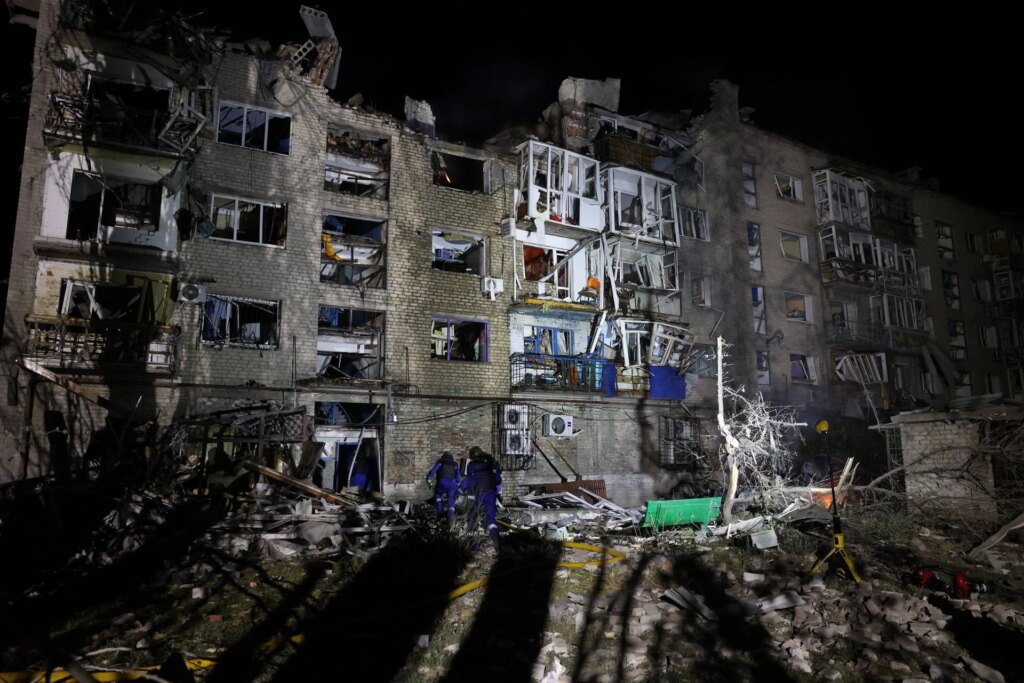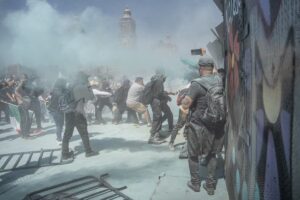
If the battle for control of Pokrovsk, in eastern Ukraine, is still ongoing on the ground, it is not playing out on pro-Russian social media, where Moscow has already won: In a viral video generated by artificial intelligence, Ukrainian soldiers retreat.
Russia has been trying to conquer the logistics center located in the eastern region of Donetsk for more than a year, and in recent weeks the attacks have intensified, the advance towards the outskirts – according to maps published by the Institute for the Study of War – carried out in a pincer movement. Clashes for control of railway lines and road junctions have not stopped, but in dozens of videos generated by artificial intelligence and circulating on social media in recent weeks – with millions of views – we can see scenes of surrender, Ukrainian soldiers handing over their weapons, others coming forward in tears.
The fake video is part of “a broader narrative that we have seen since the start of the invasion, in which Zelensky sent young and old to the front lines against their will”, commented Pablo Maristany de las Casas, an analyst at the Institute for Strategic Dialogue, quoted by AFP. “There are always events that can create false information,” said Carole Grimaud, a researcher at Aix-Marseille University. The videos “exploit uncertainty and fuel doubt in public opinion”, he underlined.
In the fake images there are many inconsistencies, some glaring, others less traceable to simple observation: among the first of course the scene of the Ukrainian soldier who claims to have “left Pokrovsk” and walks without difficulty despite his leg being in a cast, the image of a stretcher that seems to be lifted into the air and the image of disembodied legs that appear and disappear in the background.
Other fake videos, some bearing the Sora OpenAI logo, show soldiers in Ukrainian uniforms crying and begging not to be sent to the front lines. In some of these videos, the faces of Russian online streamers appear. One used an image of exiled Russian YouTuber Alexei Gubanov, who appeared in a video of a crying Ukrainian soldier. “Obviously it wasn’t me,” he explained later in a YouTube video. “Unfortunately, many people believe it… and this plays into Russian propaganda,” he lamented.
The European Digital Media Observatory, a network of fact-checking organizations funded by the EU, said it had published more than two thousand articles related to the war in Ukraine since Russia’s invasion in 2022, and in them artificial intelligence has become an increasingly recurring topic. Disinformation is “an old tactic, but the technology is new,” said Ian Garner, an expert on Russian propaganda at the Pilecki Institute. The videos work by “undermining the morals of Ukrainian society, by saying, look, this guy is just like you, he could be your brother, your father.” However, in the meantime, they strengthened Russian morale.
TikTok said the account that appeared to be behind the video had been removed. However, soon one of them accumulated more than 300,000 likes and several million views. OpenAI said it was conducting an investigation, without providing further details.
But the video is still circulating. AFP reported finding them, among others, on Instagram, Telegram, Facebook and The impact of a fake video is difficult to measure, but “if the video is repeated, there is a possibility that public perception changes,” Grimaud said.
Although some companies have shown a willingness to combat misuse of their tools, Maristany de las Casas said, “the scale and impact of information warfare outweighs the corporate response.”




